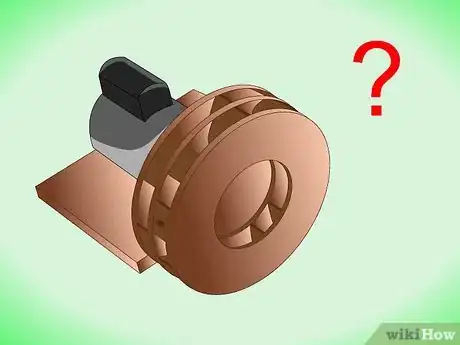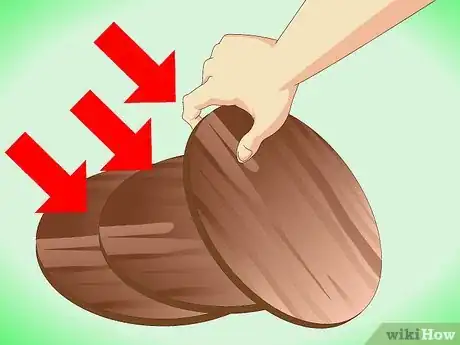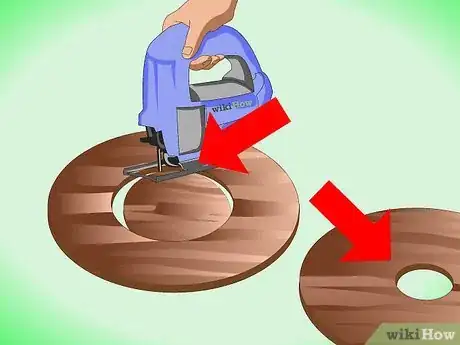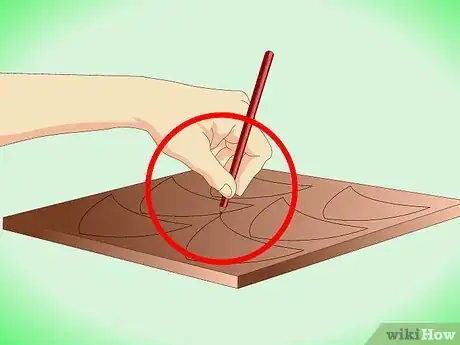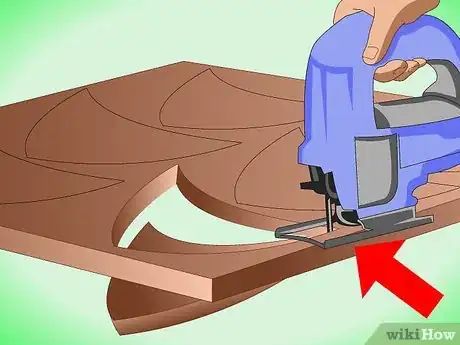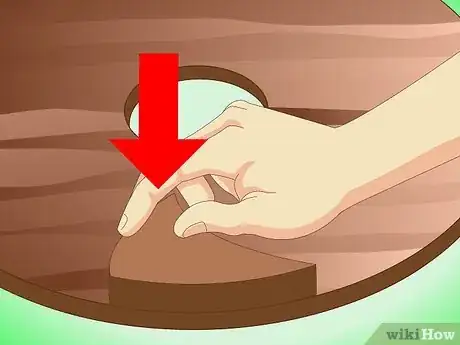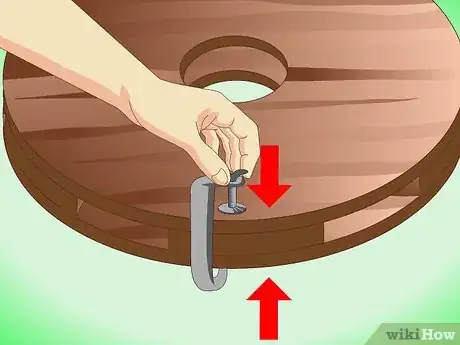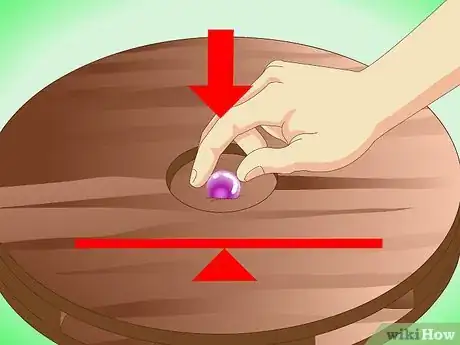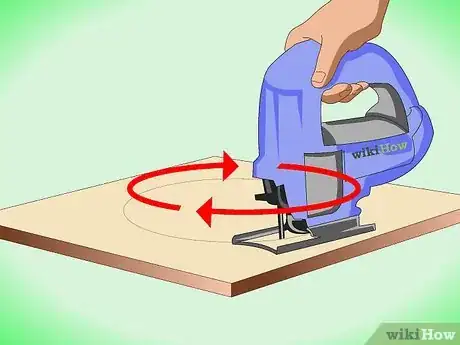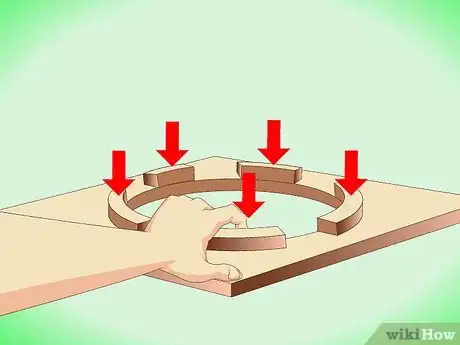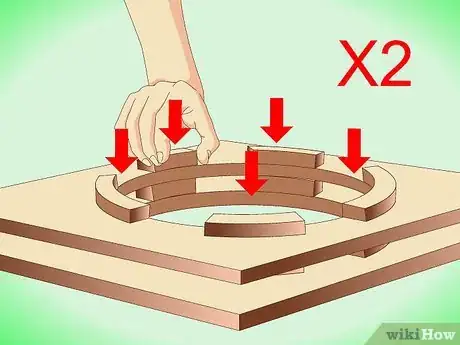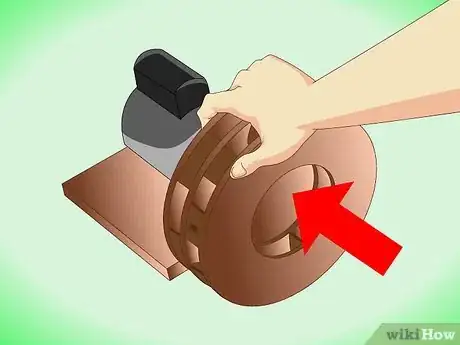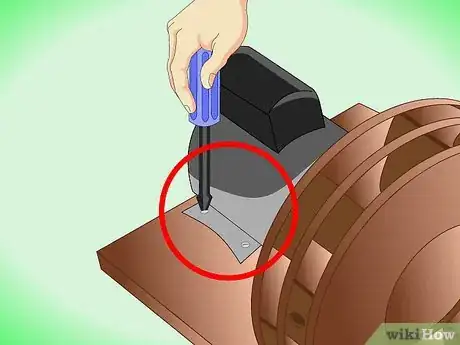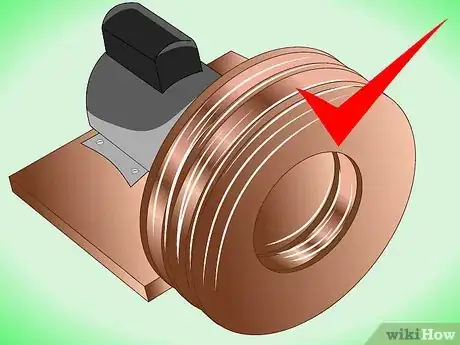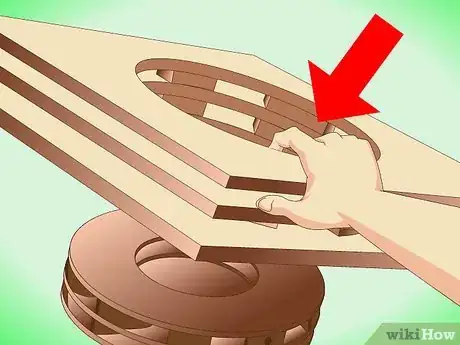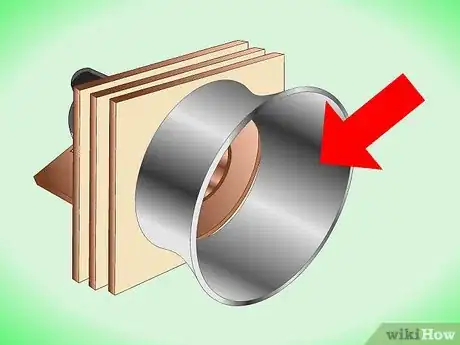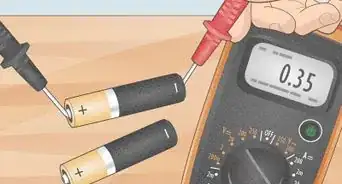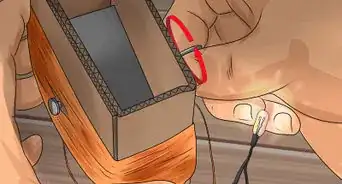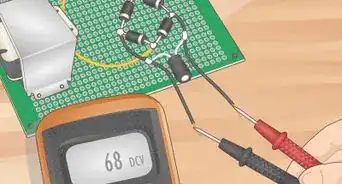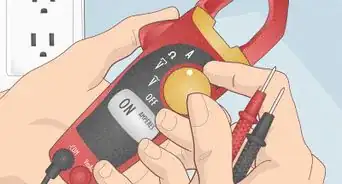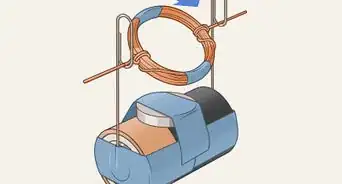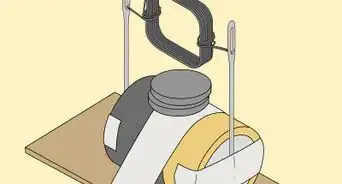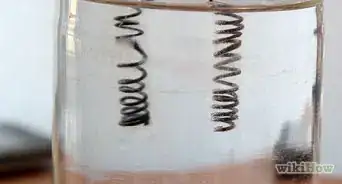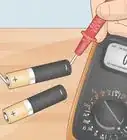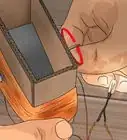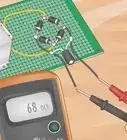wikiHow is a “wiki,” similar to Wikipedia, which means that many of our articles are co-written by multiple authors. To create this article, 16 people, some anonymous, worked to edit and improve it over time.
This article has been viewed 85,537 times.
Learn more...
The distinct rising and falling sound of an air raid siren is produced by a relatively simple machine. While the flatter pitch of most modern emergency vehicle sirens requires electronic circuitry to reproduce, the mechanical siren can be made with basic carpentry tools. Start small, since larger sirens require sturdier materials and precise building to function without breaking. Even a small siren will still probably end up loud enough, in your neighbor's opinion.
Steps
Building the Siren's Spinning Cylinder
-
1Understand how a siren works. The heart of a mechanical siren is a spinning cylinder, or rotor, inside a stationary object, or stator. Both the rotor and the stator have holes cut at regular intervals, so air is alternately blocked and forced through. This results in a wave of pressure through the air, or in other words, a sound wave. Because this design involves heavy materials moving at high speeds, a homemade siren can be difficult to make and potentially dangerous to operate. Starting with a siren rotor no more than 6 inches (15 centimeters) across is recommended. This can still be quite loud if attached to a motor.
- Alternatively, you can purchase a kit or download a plan for building an electronic siren. These use circuitry to send out a sound wave instead of mechanical air flow, and building them does not require any carpentry.
- While these instructions assumes you are using wood, it is possible to build a small siren out of almost any material. Try using thick cardboard, or a wide, shallow cookie tin.
-
2Cut out two or three plywood circles. To make a simple, one-pitch siren, you'll only need two circles. If you would like a siren that has the distinct, two-tone sound of an air raid siren, cut out three circles instead. Trace each circle to the same size using a compass or circular object, then cut them out using a jigsaw or router. Optionally, for greater accuracy, attach a circle-cutting jig to your jigsaw before cutting.[1]
- Circles no more than 6 in. (15 cm) across are recommended for your first siren. A larger circle can produce a louder noise, but this will require a more powerful motor and more careful building to prevent the siren from breaking during use.
- Eye protection is recommended while handling high-speed saws.
Advertisement -
3Make holes in the center of the plywood circles. The first plywood circle will need a hole for attaching the shaft of a motor, in order to set it spinning. Drill this precisely at the center to keep it balanced, and choose a size that will tightly fit the shaft so it does not slip off. The second (and third) plywood circle should have a much larger circle removed using a jigsaw, 1/3 or 1/2 the radius of the full circle. This turns the second (and third) plywood circle into a disc shape.
-
4Trace out a "shark fin" shape. Trace one of your circles onto a new piece of plywood. On this trace, use a flexible tape measure to measure 1/12 of the circle's circumference and mark it off at either end. Draw a concave line from one end and a convex one from the other, tapering toward each other to meet at a point, which will just touch the inside edge of your plywood discs. This should look similar to the stereotypical shape of a shark's dorsal fin, pointing toward the circle's center.
-
5Cut out six shark fin shapes out of wood. Cut out your "shark fin" piece of plywood, and use it to trace the same shape onto a length of 2 x 4 (38 x 89 mm), six times. Use your jigsaw or router to cut out these shapes.
- If making a dual-tone siren with three plywood circles, [2]
-
6Glue the shark fins onto the first plywood circle. Arrange the "shark fins" around the circumference of the plywood circle, so their bases are even with the circle's edge, and the tips tapers in pointing toward the center. Space these evenly, so you can see curved channels between them where the air will be pushed through from the center outward. Use a strong carpenter's glue to attach these to the surface, and clamp the plywood and the "shark fins" firmly together while the glue dries.
- Check the label of your adhesive to find out how long it takes to dry.
- If, after the glue has dried, you can pull off or move the wooden fins, repeat with a stronger glue or a stronger clamp.
-
7Complete the rotor. Glue the plywood disc on top of the shark fins, and clamp until dry. If you are building a two-tone siren, cut out more shark fin shapes of a different size to form the second cylinder. For instance, trace shark fins with a base covering 1/20 of the circle's edge, and cut out 10 of them to glue on top of the plywood disc. Glue the last plywood disc on top of these.
-
8Balance the rotor. Find a marble or other perfectly round object, and fit it into the small hole on the plywood circle, where the shaft will eventually go. Place the entire rotor on a flat surface, resting on top of this marble, and attempt to balance it. When the rotor falls over onto one side, mark which side that is and remove some weight from that side by drilling holes through the plywood circle, near the circumference, or through the ends of the shark fin shapes.[3] Repeat until the rotor is as balanced as possible, to minimize stress on the siren during operation.
Building the Siren's Outer Portion
-
1Cut a hole in a plywood board, larger than the cylinder. The cylinder, or rotor, that you built will blow air if spun, but won't yet make any sound. For that, you'll need a stationary container, or stator, around the cylinder. Start with a piece of plywood, and cut a hole just a bit larger than the cylinder you'll be putting through it.
- Alternatively, if you can find a sturdy wastebasket of the correct size, cut a hole in the base of it. This will also provide a horn to amplify the sound.
-
2Attach wooden pieces, spaced around the hole. Cut out wooden pieces with the same outer circumference as the hole you cut, and the same thickness as the "shark fins" you used in the cylinder. The goal is to end up with an outer rim with holes that will line up exactly with the cylinder's. Glue these around the hole and clamp until dry.
-
3Repeat if making a dual-tone siren. If your cylinder has two spinning levels of "shark fins," you'll need a second wooden rim protruding beyond the first, where the second level of your cylinder will spin. This rim, similar to the first, will have spaces that line up exactly with the second level of the cylinder as it spins.
Finishing the Siren
-
1Mount the cylinder onto a motor. Fit the small hole at one end of the cylinder onto a motor shaft. This fit should be as secure as possible, so replace the motor shaft with one of a different size if necessary. A small siren may function on a hand-cranked motor, but larger motors will be required for heavy sirens.
- Never put your hand or any object on the cylinder while it is attached to a motor, even while it is not spinning.
-
2Mount the motor in place. The larger the siren, and the more powerful the motor, the more effort you'll need to spend keeping it all in place. Consider constructing a sturdy lumber platform to hold a large motor in place. For hand-cranked motors, a small stand to keep the cylinder off the ground may be all that is required.
-
3Test the cylinder. Standing well behind the siren, turn on the motor (or start cranking) and watch what happens. Be ready to turn it off again immediately if necessary. It's better to discover a broken piece or other problem now, before you attach the rest of the siren. Turn the motor off and let the cylinder wind down on its own before you continue.
-
4Mount the stationary outer portion. Carefully place the outer plywood board with the hole cut through it around the cylinder. Bolt it tightly in place to the motor's platform, so the wooden rim around the hole is near the cylinder, but in no danger of colliding with it.
-
5Add an amplifying horn (optional). Your siren is already functional, and you will likely want to test it before you decide to make it louder. Any horn- or trumpet-shaped object, flaring outward, can be used to amplify the sound. Attach the base of this object onto the front of the wooden rim, not blocking the holes.
- You may need to expand the platform in back to balance out the weight of the horn.
Community Q&A
-
QuestionHow do I balance the rotor?
 Community AnswerYou balance it by placing a marble or other small, perfectly round ball in the middle of the siren. Then, you get a small surface (i.e., a small piece of wood) and place the marble on it to see where it is heavier. Take weight off of the heavier side by drilling small holes in the fins, constantly checking to make sure it is balanced, or to make sure you did not take too much off.
Community AnswerYou balance it by placing a marble or other small, perfectly round ball in the middle of the siren. Then, you get a small surface (i.e., a small piece of wood) and place the marble on it to see where it is heavier. Take weight off of the heavier side by drilling small holes in the fins, constantly checking to make sure it is balanced, or to make sure you did not take too much off. -
QuestionWhy do I have to put a ball in the middle of the siren?
 Community AnswerTo balance it. If the siren is not balanced, it can knock itself over.
Community AnswerTo balance it. If the siren is not balanced, it can knock itself over.
Warnings
- If this is being used in a car, don't sound it while in motion. The authorities don't like a siren on a non-official vehicle. Using a siren while in motion is typically a serious offence.⧼thumbs_response⧽
- If you have built an outdoor siren, don't sound it unless it's test day in your area, or there is an actual emergency.⧼thumbs_response⧽
Things You'll Need
- Plywood
- 2 x 4 lumber
- Jigsaw
- Motor
References
About This Article
To build a siren, first make the rotor by using a jigsaw to cut out 2 6-inch disks and smaller connectors from plywood. Next, sandwich your connectors between the 2 disks and glue them together with carpenter’s glue. To build the siren’s outer portion, use your jigsaw to cut a hole larger than the rotor into a plywood board. Then, attach rounded wooden pieces around the edge of the hole. Finally, align the small hole of the rotor onto a motor shaft, and mount everything onto the outer portion of the siren. To learn how to build other types of sirens, like a two-tone siren, read on!
